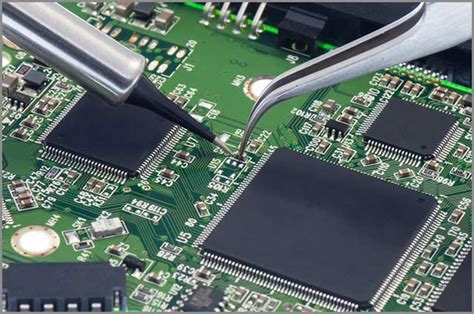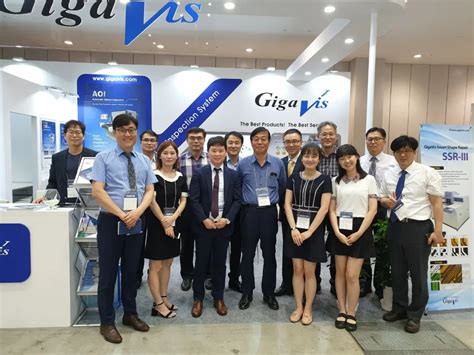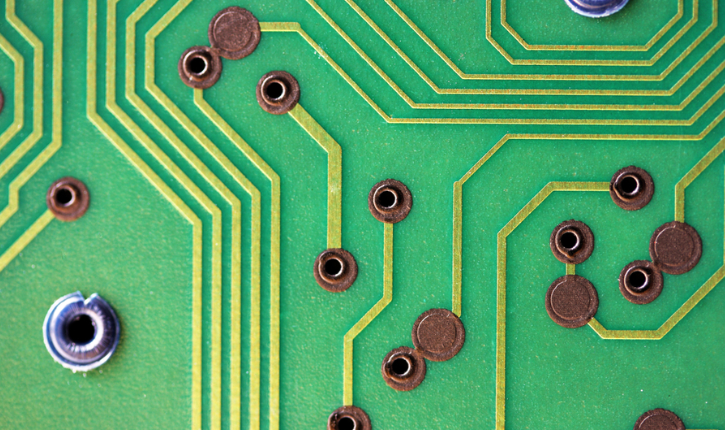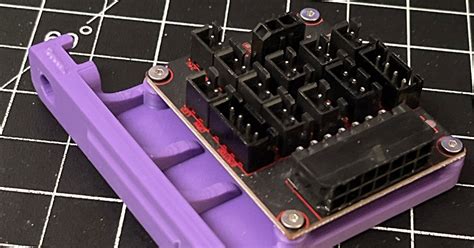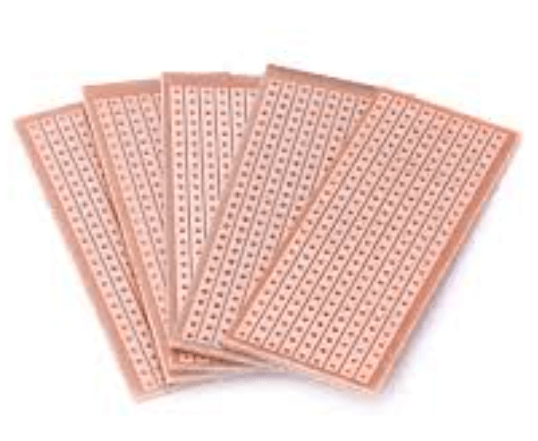Unlocking Efficiency: Advanced Assembly Techniques for PCB Design
Key Takeaways
The implementation of advanced assembly techniques in PCB design has revolutionized the way we approach pcb assembly. Today’s innovations not only streamline the production process but also contribute significantly to the overall performance of printed circuit boards (PCBs). One critical aspect to note is how pcba integrates cutting-edge tools and methodologies, leading to enhanced precision and efficiency. For instance, automated assembly processes reduce the margin for human error and increase throughput, making it possible to meet burgeoning demand without sacrificing quality.
Moreover, employing advanced materials can result in lighter, more durable boards that are better suited for modern technology. As we delve into best practices within the field, attention should be paid to continuous training and development of personnel involved in pcb assembly, ensuring they are well-equipped with the latest insights and skills relevant to these advanced methods. Recognizing these trends will not only aid in improving circuit board performance but also facilitate a more agile response to market needs. The capacity for ongoing improvement through these techniques underscores their importance in achieving operational excellence and global competitiveness in electronic manufacturing.
Introduction to Advanced Assembly Techniques in PCB Design
In the rapidly evolving landscape of technology, advanced assembly techniques in PCB design play a crucial role in elevating the capabilities and performance of electronic devices. As the complexity and density of circuit boards increase, the need for efficient PCB assembly processes becomes paramount. By integrating innovative strategies and methodologies, manufacturers can enhance the quality and reliability of their products while optimizing production time and costs. Techniques such as automation in assembly lines, improved soldering methods, and precise component placement are instrumental in achieving high-performance printed circuit board assemblies (PCBA). Moreover, employing specialized tools allows for better heat dissipation and signal integrity, which are essential for modern electronics that demand greater functionality within smaller form factors. This comprehensive approach not only streamlines operations but also results in improved end-user experiences as devices become more powerful yet compact. As the industry continues to embrace these cutting-edge advancements, understanding their impact on PCB assembly will be essential for engineers and designers looking to stay ahead in a competitive market.
Key Innovations Shaping PCB Assembly Processes
The landscape of PCB assembly is rapidly evolving, driven by innovative techniques that enhance efficiency and performance. One notable advancement is the application of automated assembly systems, which reduce labor costs and minimize human error. These systems utilize robotics and machine learning algorithms to optimize placement accuracy and speed during the PCBA process. Another significant innovation is the integration of advanced soldering technologies, such as wave soldering and reflow soldering, which ensure strong connections while protecting sensitive components from excessive heat. Additionally, the use of flexible printed circuits allows for more compact designs that are not only lightweight but also adaptable to various applications.
“Incorporating these innovations into design and production not only improves product quality but also accelerates time-to-market.”
Furthermore, real-time monitoring and data analytics play a crucial role in identifying bottlenecks in the PCB assembly workflow. By utilizing Internet of Things (IoT) devices, manufacturers can gather data on production metrics to refine processes continuously. The synergy between these innovations fosters a more agile approach to PCB assembly, allowing businesses to respond swiftly to market demands while enhancing overall product longevity and reliability.
Tools and Technologies for Enhanced PCB Production
The pcb assembly process has significantly evolved due to the integration of advanced tools and technologies, which streamline production and enhance the overall efficiency of circuit board manufacturing. In today’s competitive landscape, manufacturers are increasingly adopting automated assembly systems that leverage robotics and machine vision technologies. These systems not only reduce human error but also increase production speed, improving the overall throughput of PCBA (Printed Circuit Board Assembly) lines.
Moreover, the implementation of advanced software tools for design for manufacturability (DFM) ensures that circuit boards are optimized for each stage of production. This can involve using simulation software to predict potential assembly issues before they arise, thus saving time and reducing material waste during actual manufacturing.
Here’s a concise comparison of two popular tools used in modern pcb assembly:
| Tool/Technology | Benefits | Applications |
|---|---|---|
| Automated PCB Assembly Machines | Increases speed and accuracy in placing components on boards | High-volume production |
| DFM Software | Predicts issues in design phase | Early-stage design reviews |
Furthermore, innovations such as selective soldering and lightweight materials contribute significantly to enhancing PCB performance while maintaining cost-efficiency. The adoption of these advanced technologies not only leads to faster turnaround times but also elevates the reliability of finished products—an essential factor in sectors such as consumer electronics and aerospace.
In conclusion, the right combination of tools and technologies is crucial for optimizing pcba processes, ensuring that manufacturers can meet ever-shifting demands while continuing to deliver high-quality circuit boards that meet modern technological standards.
Streamlining Production: Best Practices for Efficiency
To achieve optimal pcb assembly efficiency, organizations must adopt a variety of best practices that not only enhance productivity but also improve the overall quality of the final products. One critical approach is the implementation of lean manufacturing principles. By minimizing waste and maximizing value, teams can streamline their processes to increase throughput. Furthermore, the integration of automated systems and robotics into the pcba process can significantly reduce manual errors and enhance consistency in assembly tasks. Another important practice is conducting regular training sessions for staff to ensure everyone is proficient in using both traditional and cutting-edge tools. This commitment to workforce development ensures that employees are capable of effectively utilizing advanced technologies in their daily operations. Additionally, embracing just-in-time inventory management can help reduce excess stock and ensure that components are available precisely when needed, thus minimizing downtime during production runs. Lastly, implementing a continuous feedback loop allows for real-time adjustments to production processes based on performance metrics, facilitating ongoing improvements in efficiency. By focusing on these best practices, organizations can not only enhance their pcb assembly processes but also position themselves competitively within the rapidly evolving landscape of modern technology.
Performance Optimization in Modern Circuit Boards
In the realm of PCB assembly, optimizing performance has become a crucial focus for manufacturers aiming to enhance the functionality and reliability of their products. Modern circuit boards are designed to meet increasingly demanding specifications, requiring innovative approaches to PCBA. Through the integration of advanced assembly techniques, manufacturers can significantly improve thermal management, reduce electromagnetic interference, and enhance signal integrity. Techniques such as surface mount technology (SMT) and through-hole assembly play pivotal roles in enabling tighter circuit layouts and increased component density, ultimately leading to more efficient designs. Furthermore, utilizing sophisticated tools like automated optical inspection (AOI) systems ensures the precision of each assembly process while minimizing human error. By embracing these innovative methods, companies not only streamline production but also ensure that their pcb assemblies meet both performance metrics and consumer expectations. Ultimately, the focus on rigorous testing and quality assurance within the production pipeline safeguards against potential failures, enhancing overall product reliability in a competitive market.
Case Studies: Successful Implementation of Advanced Assembly
In recent years, various industries have embraced advanced assembly techniques in PCB assembly processes, leading to remarkable improvements in production efficiency and circuit board performance. One notable case involved a prominent consumer electronics manufacturer that sought to enhance the speed and accuracy of their PCBA operations. By integrating automated soldering equipment with advanced optical inspection systems, they achieved a significant reduction in defects while doubling their output rate. This shift not only streamlined the overall workflow but also ensured higher precision in the assembly of complex components.
Another exemplary case is that of an automotive electronics company that adopted advanced assembly methods to address the growing complexity of their circuit boards. Utilizing sophisticated surface mount technology (SMT) and implementing advanced machine-learning algorithms for process optimization, they successfully minimized waste and improved material utilization. As a result, they were able to accelerate time-to-market for new products while maintaining compliance with stringent safety standards. These real-world examples underline the effectiveness of embracing such innovative techniques within PCB assembly, showcasing how organizations can leverage technology to drive growth and enhance their competitive edge in today’s fast-paced market.
Future Trends in PCB Assembly Techniques
As technology continues to advance, the landscape of pcb assembly is experiencing significant shifts that promise to revolutionize production methodologies. One notable trend is the increasing incorporation of automation and artificial intelligence in pcba processes. Automation not only accelerates assembly line speeds but also enhances precision, reducing the likelihood of human error during manufacturing. This shift towards a more automated environment allows engineers to focus on innovation rather than repetitive tasks. Additionally, the integration of smart technologies such as Internet of Things (IoT) devices enables real-time monitoring of production lines, facilitating immediate adjustments that optimize efficiency. Another emerging trend is the push towards miniaturization, where components are designed to be smaller and more efficient without sacrificing performance. This change necessitates advanced techniques in pcb assembly, including precise soldering methods and innovative testing strategies that ensure reliability in compact spaces. As industry standards evolve, manufacturers are also prioritizing sustainability, searching for eco-friendly materials and processes that minimize waste while maintaining high performance levels. The combination of these innovative approaches heralds a new era for pcb assembly, emphasizing efficiency and quality in modern circuit board design and production.
Conclusion
In summary, the landscape of PCB assembly has been transformed by the adoption of advanced assembly techniques. By leveraging innovative methodologies and cutting-edge tools, manufacturers are able to enhance both efficiency and performance in PCBA. The integration of smart automation not only accelerates production timelines but also significantly reduces the likelihood of errors, leading to higher quality circuit boards. Moreover, the implementation of best practices in design and assembly processes has proven to be essential for optimizing overall workflow. As industries continue to evolve, the importance of keeping pace with advanced PCB assembly technologies will be paramount. By embracing these innovations, companies can achieve a competitive edge while ensuring that their products meet the increasing demands for reliability and precision in modern technology. Thus, the emphasis on continuous improvement in PCB design will undoubtedly drive future success in this vital sector.
FAQs
Q: What is PCB assembly?
A: PCB assembly, often referred to as PCBA, is the process of connecting electronic components to a printed circuit board (PCB) to create a functional electronic device.
Q: What are the advantages of using advanced assembly techniques in PCB design?
A: Advanced assembly techniques help improve efficiency by streamlining production processes, reducing costs, and enhancing the overall performance of the circuit boards through innovative methods and best practices.
Q: How do tools and technologies impact PCB assembly?
A: The right tools and technologies enhance pcb assembly processes by enabling faster production times, increased precision, and better quality assurance throughout the manufacturing stage.
Q: Can you explain the importance of performance optimization in PCBA?
A: Performance optimization in PCBA is crucial as it ensures that the circuit boards meet stringent operational standards, enhancing reliability and lifespan while minimizing failures in electronic devices.
Q: What role do case studies play in understanding advanced assembly techniques?
A: Case studies illustrate real-world applications of advanced assembly methods, showcasing their effectiveness in improving efficiency and performance in various industries’ pcb assembly processes.

